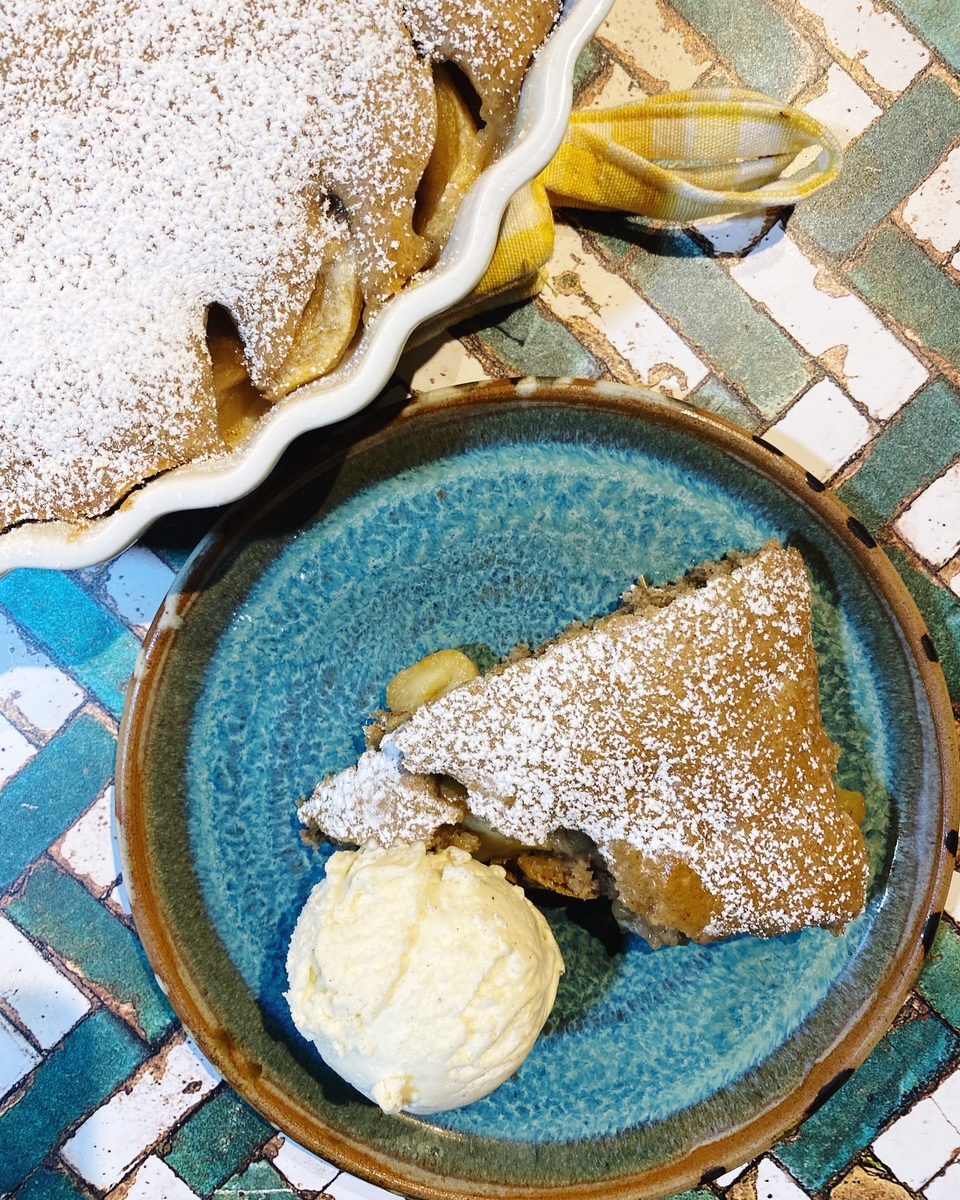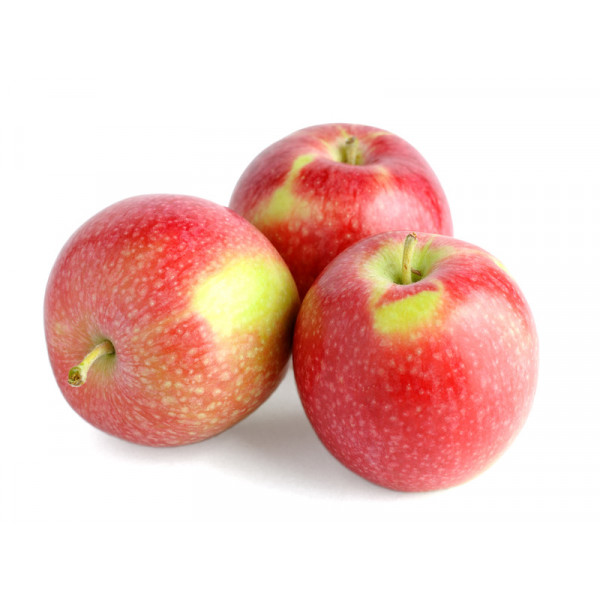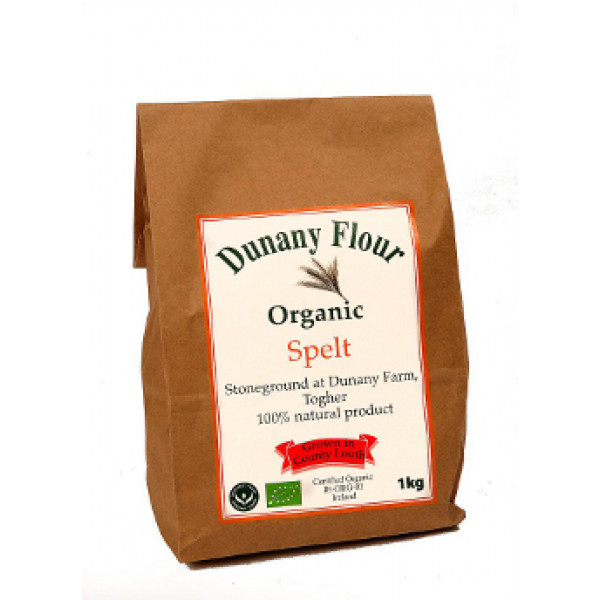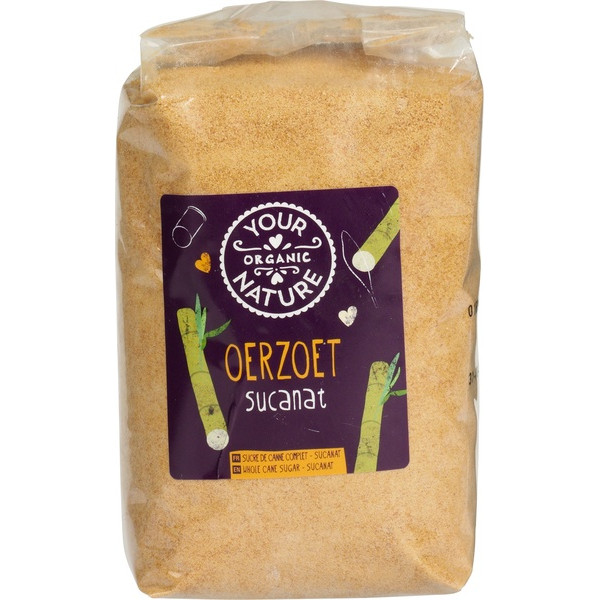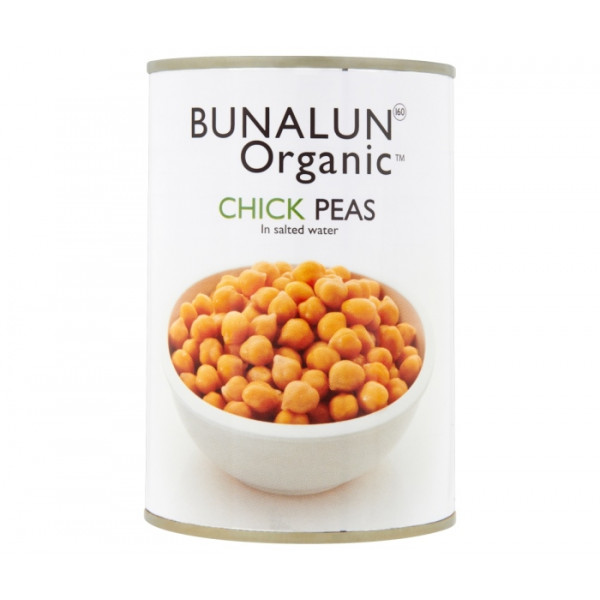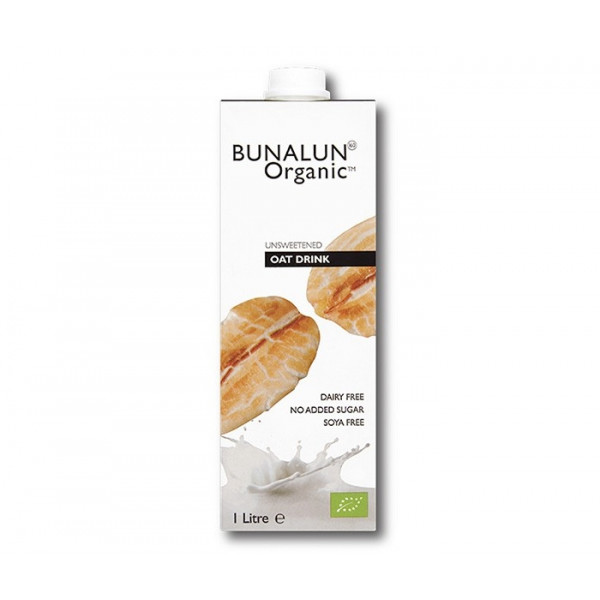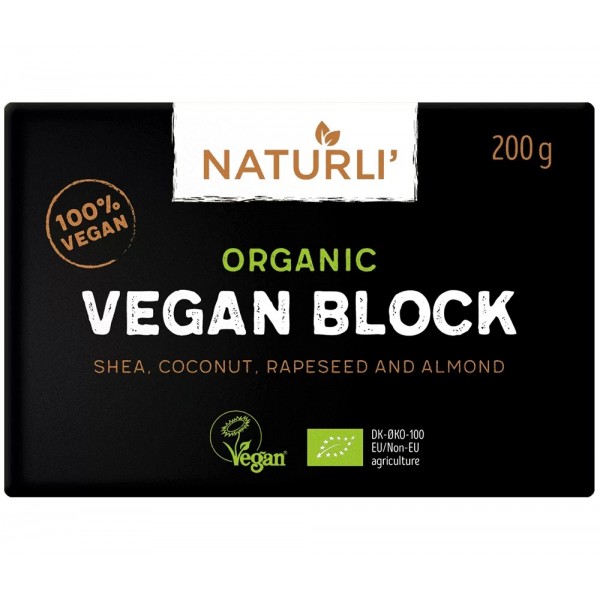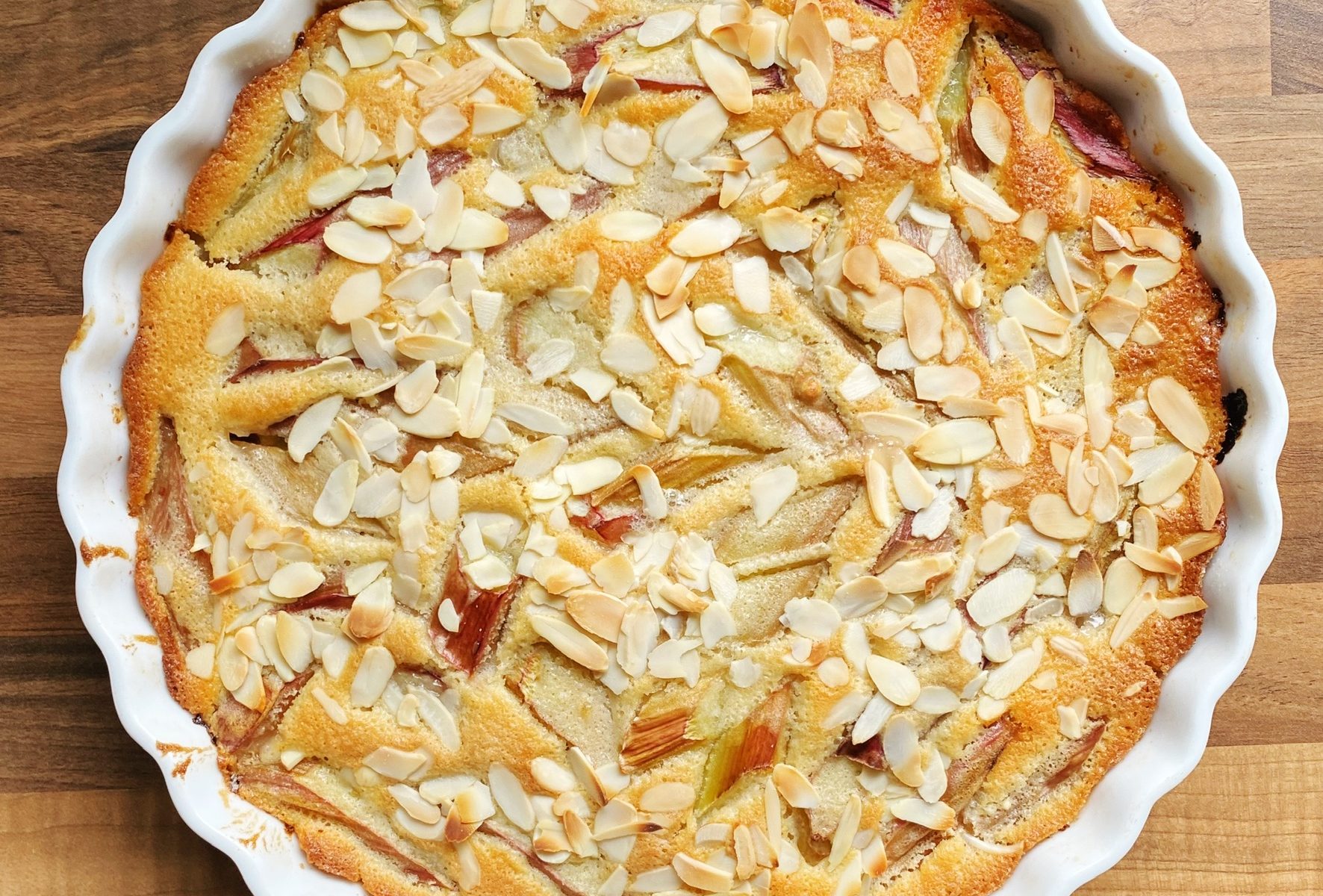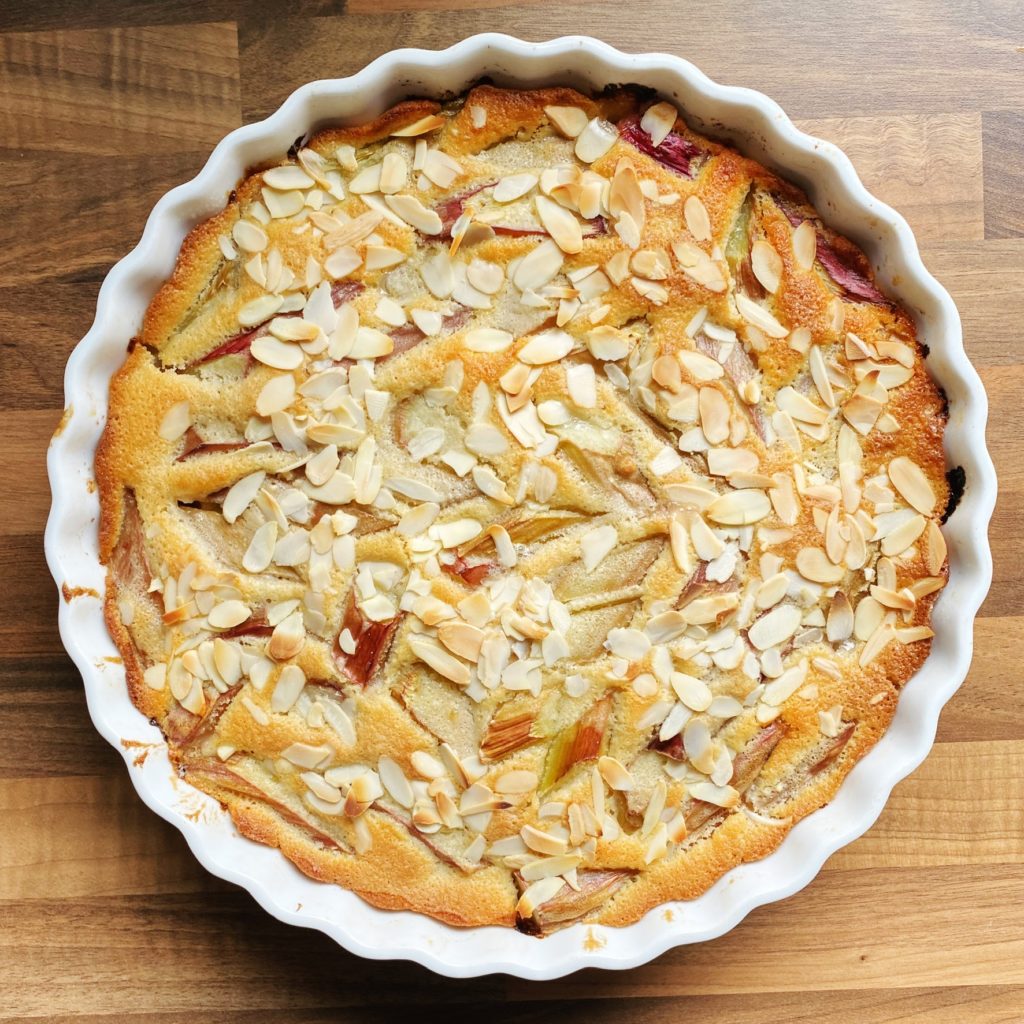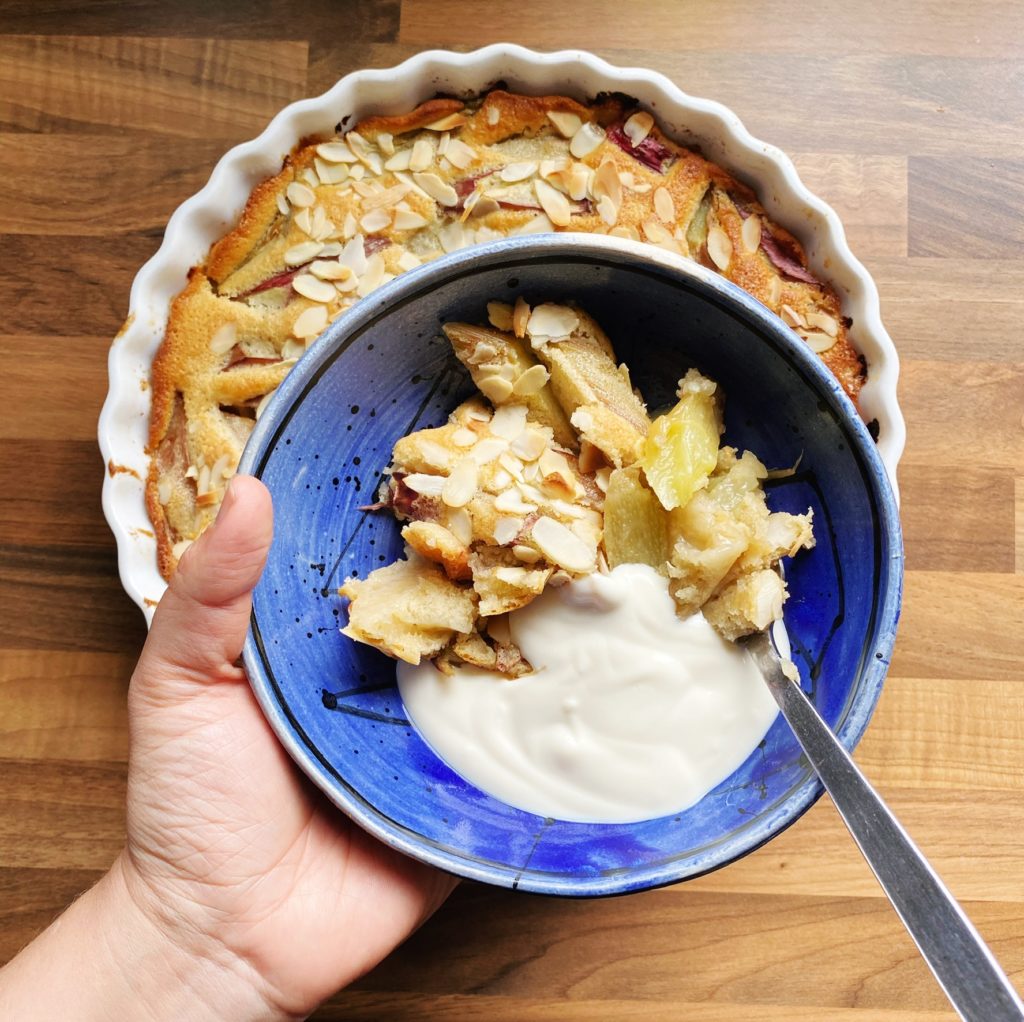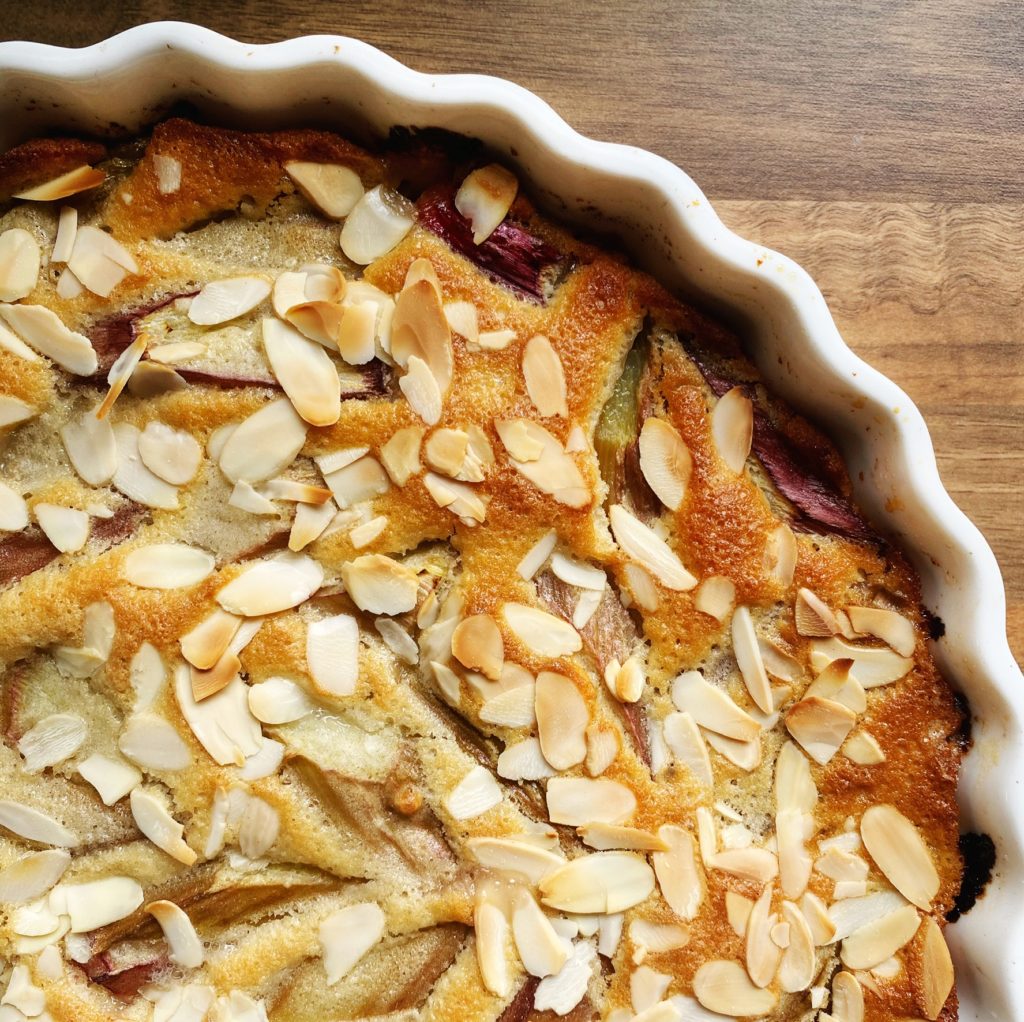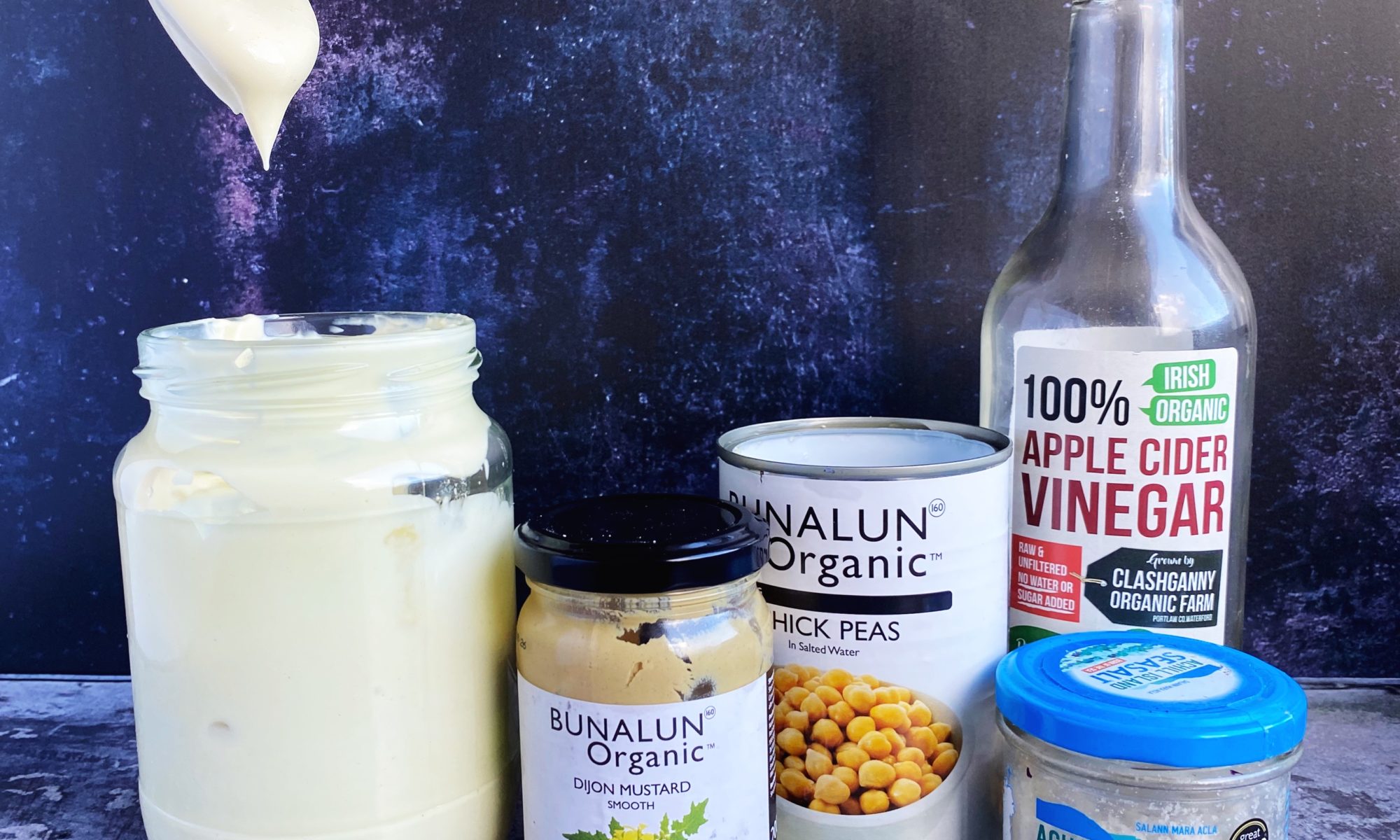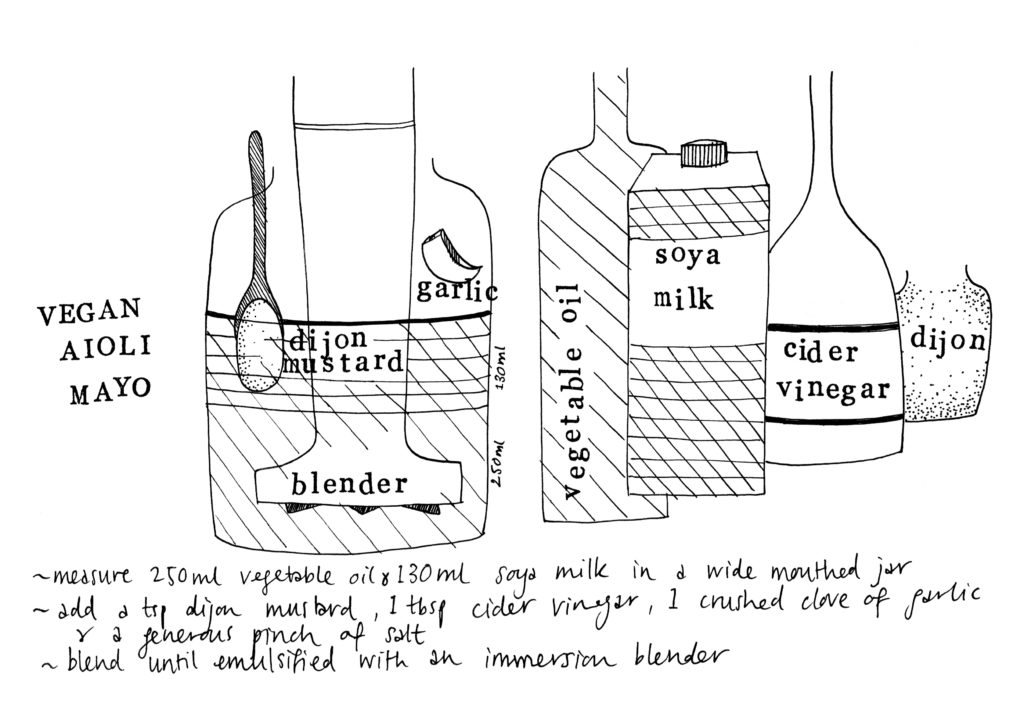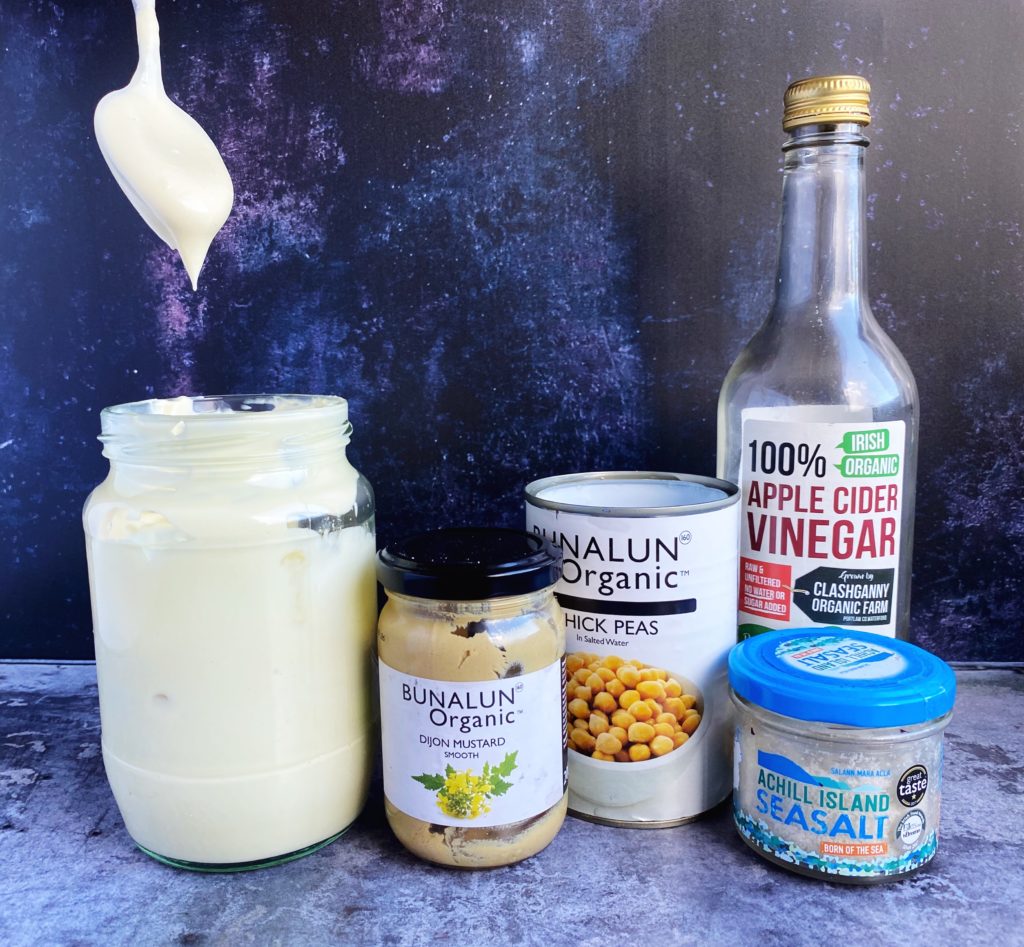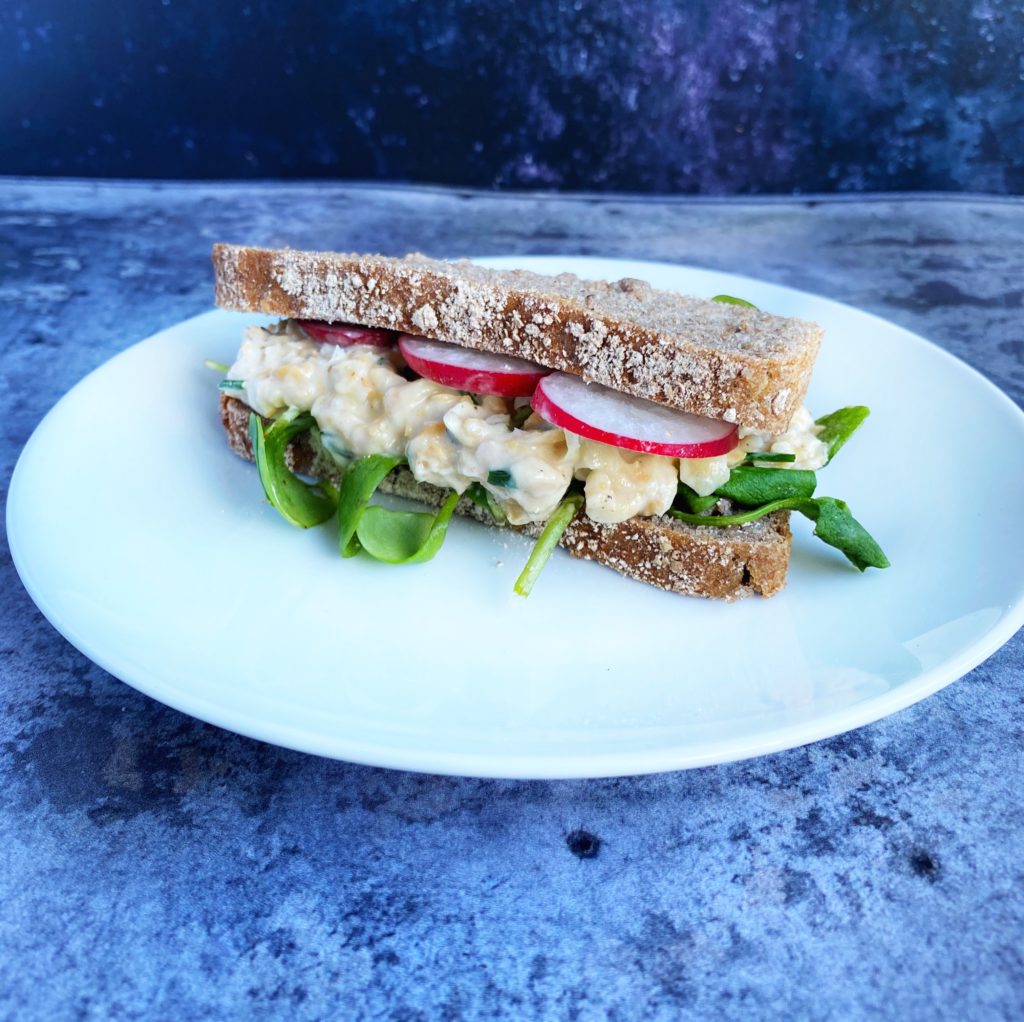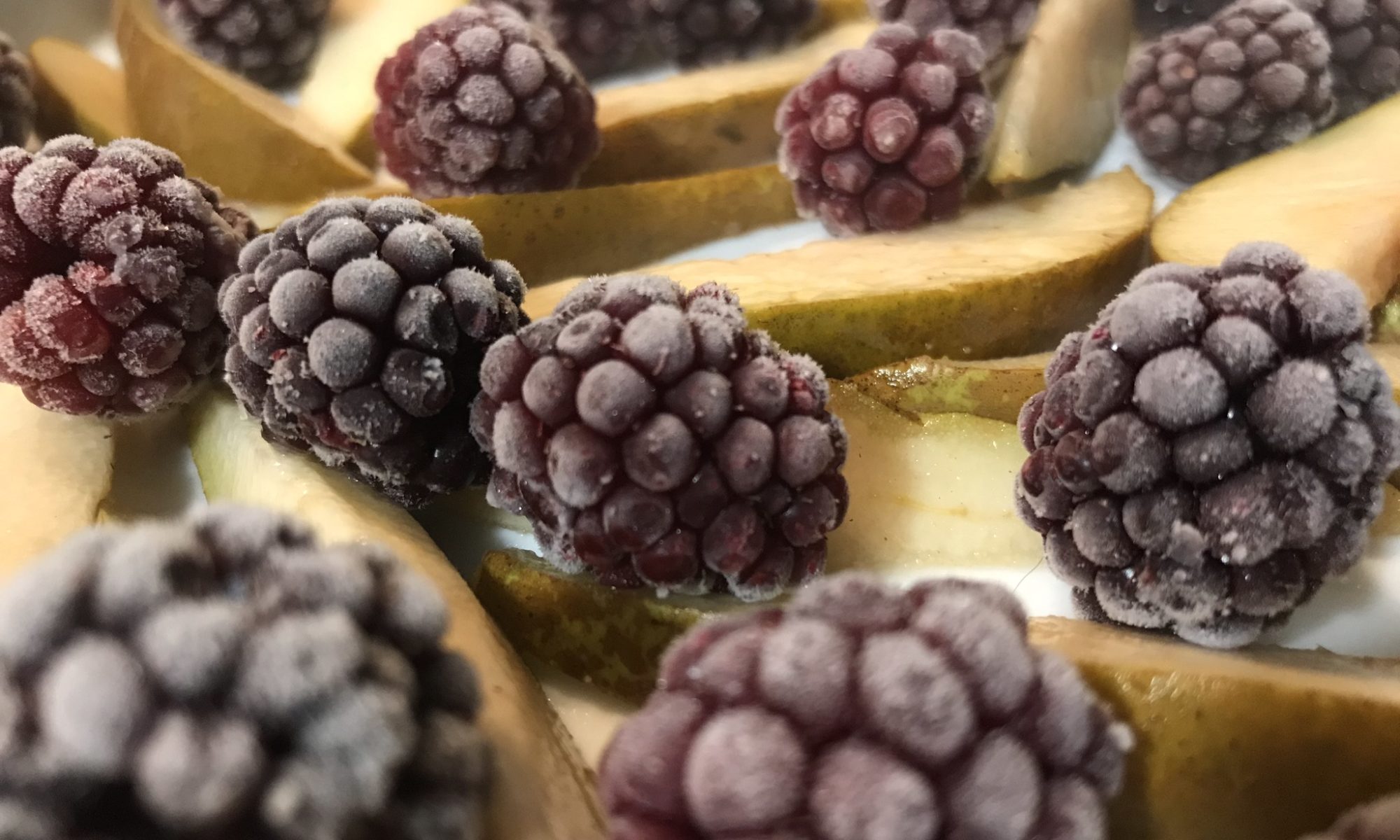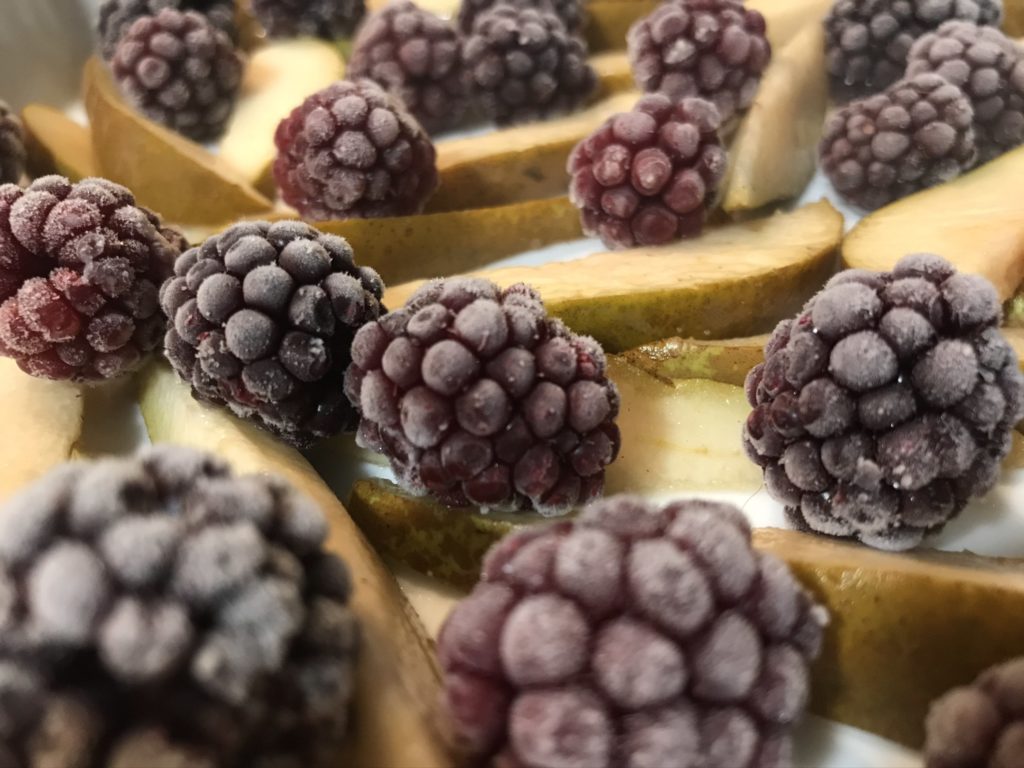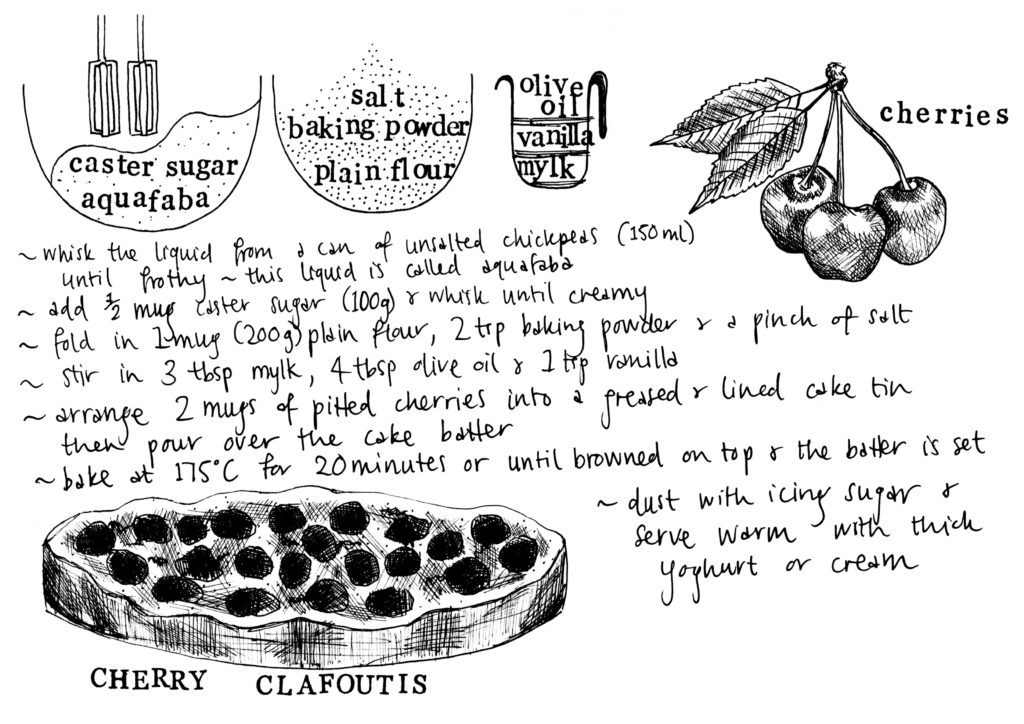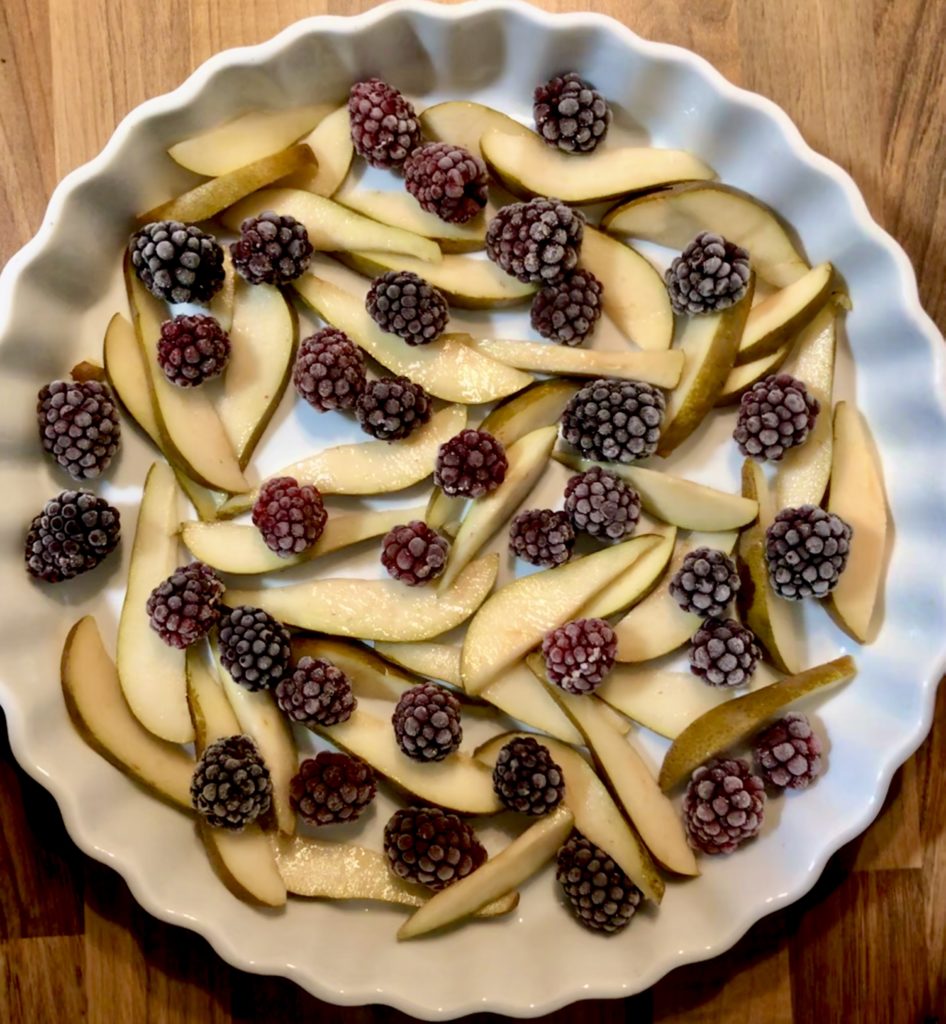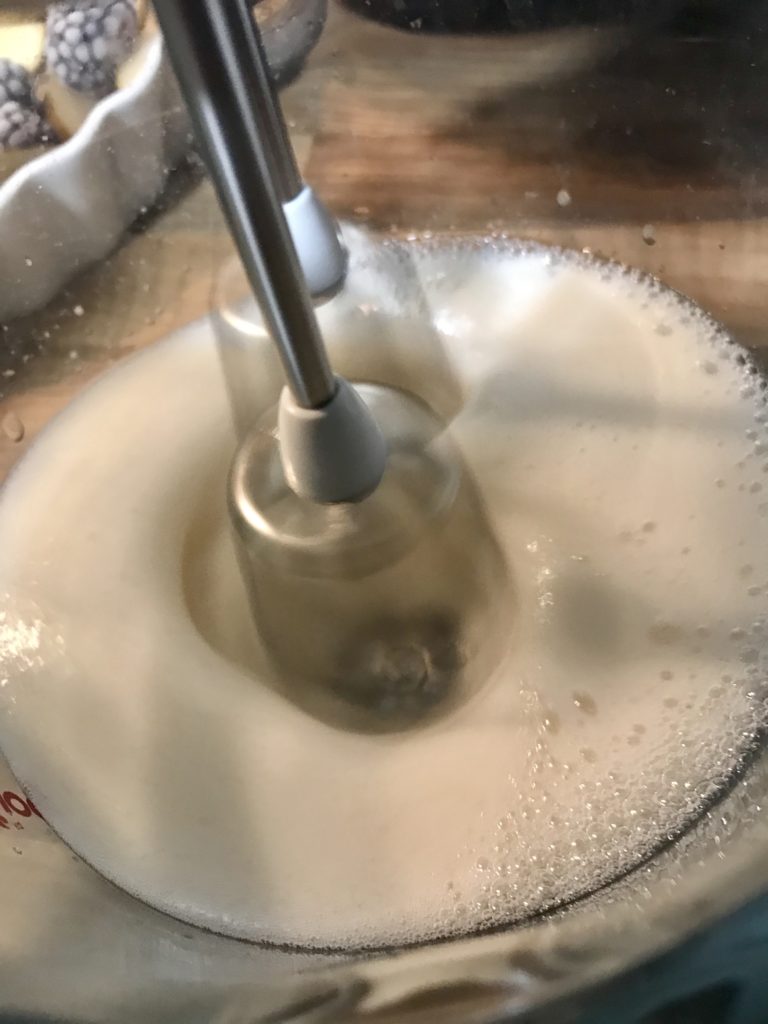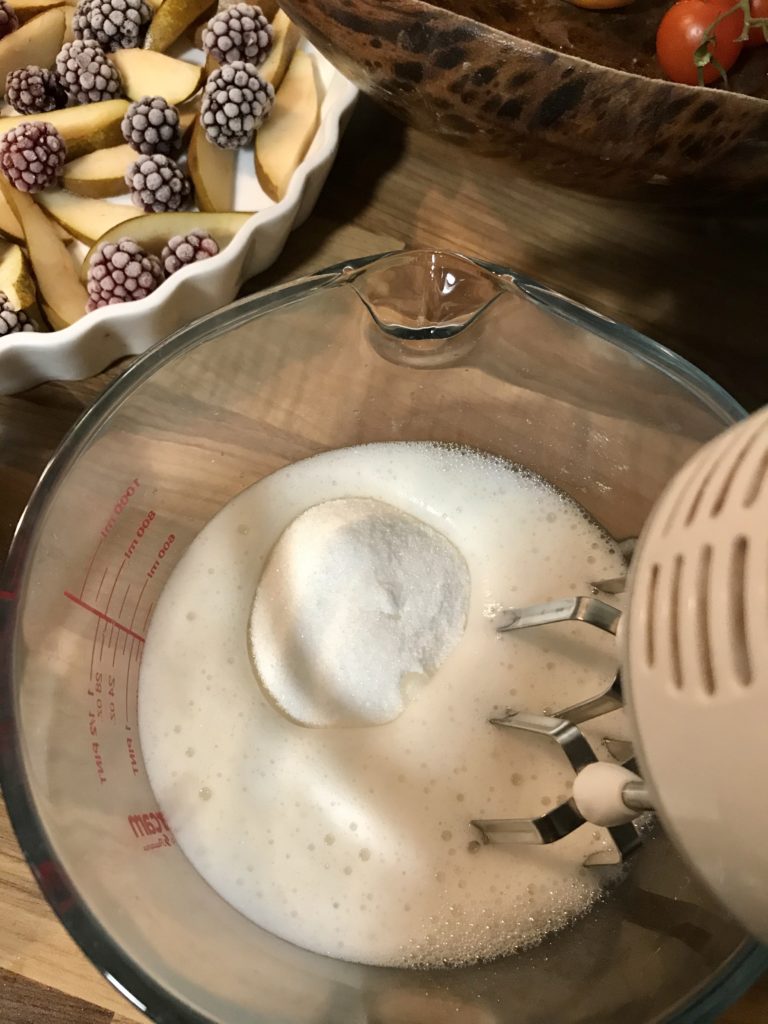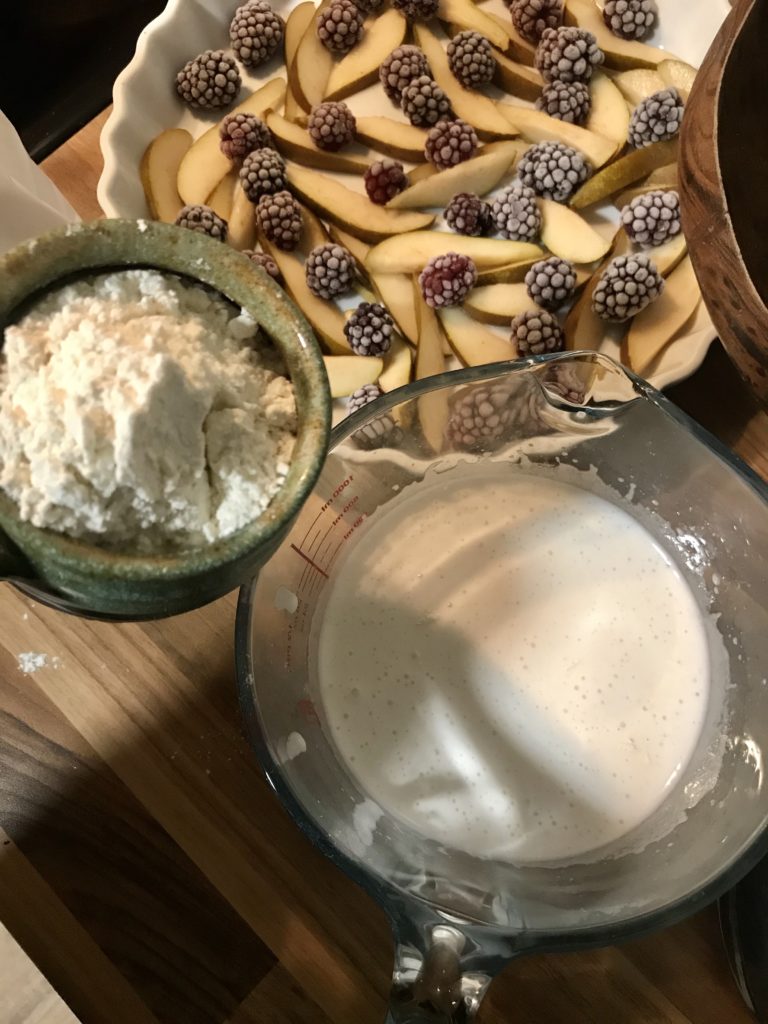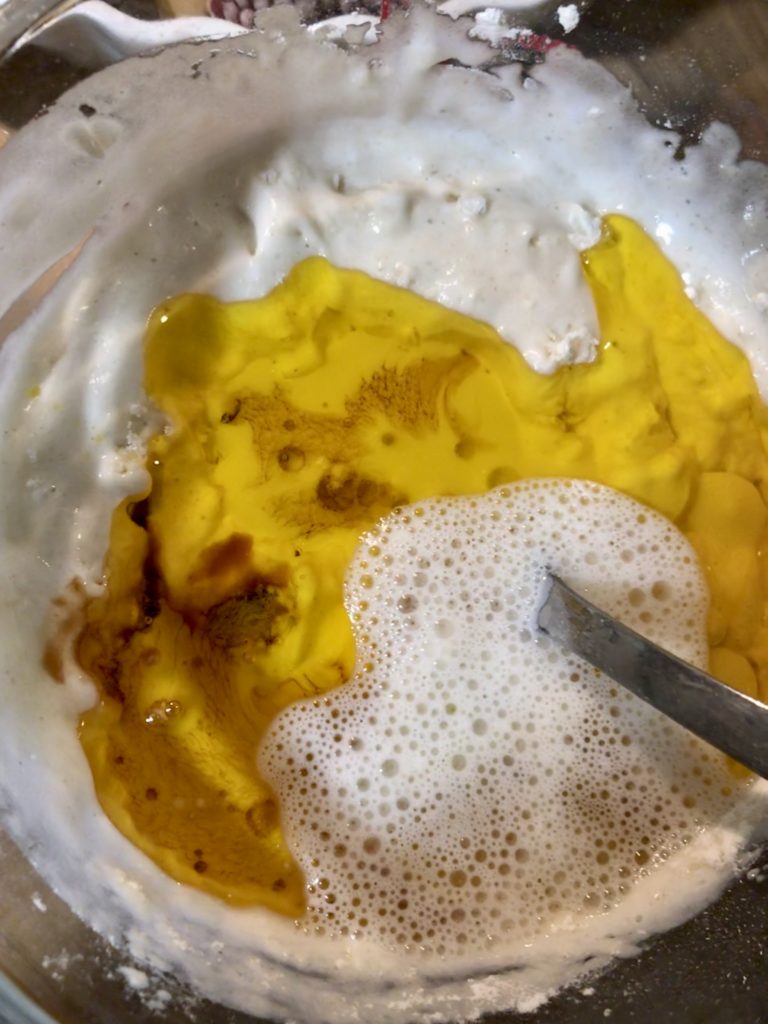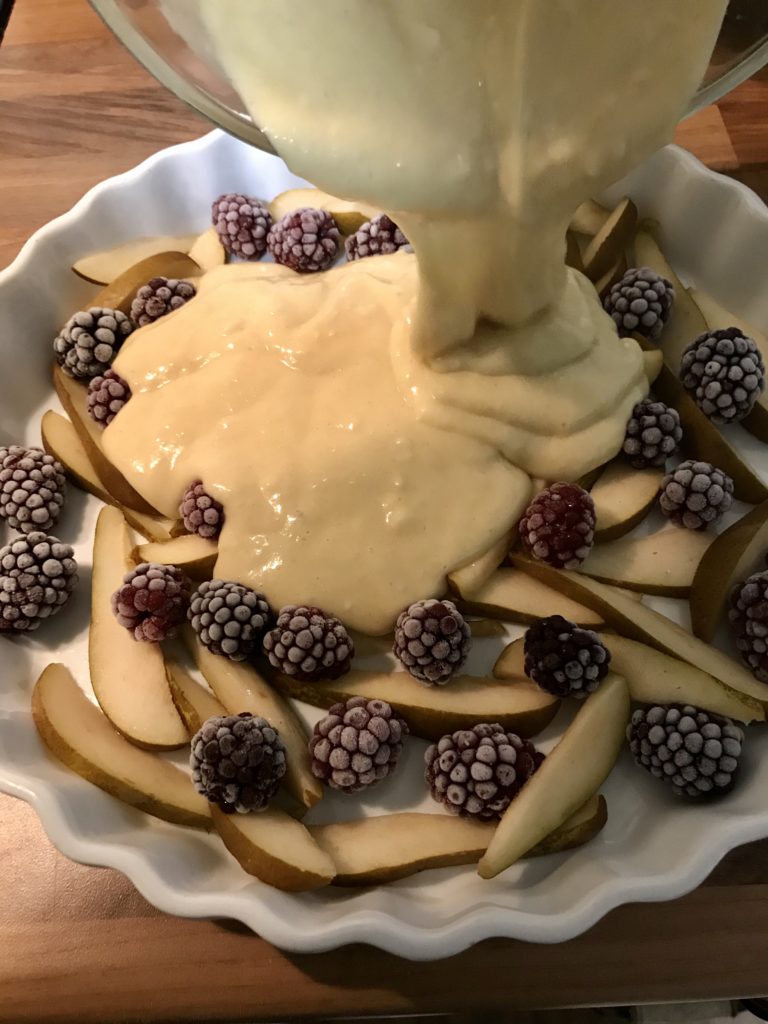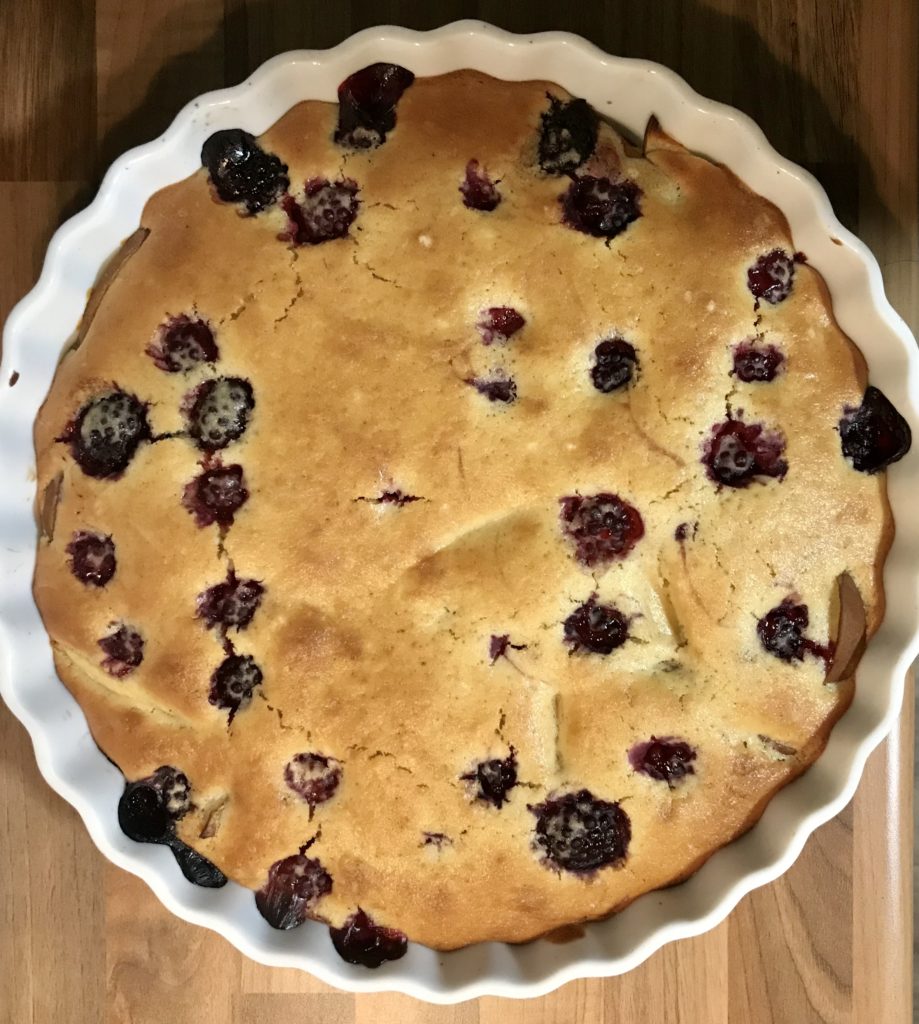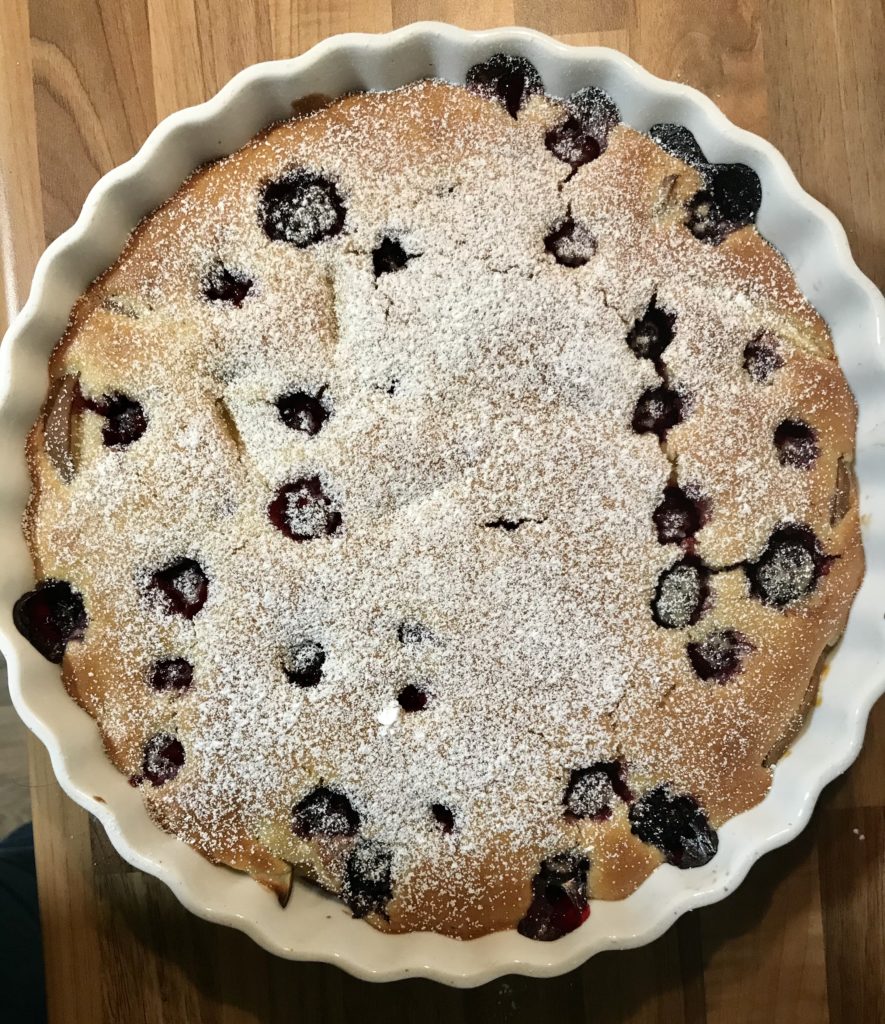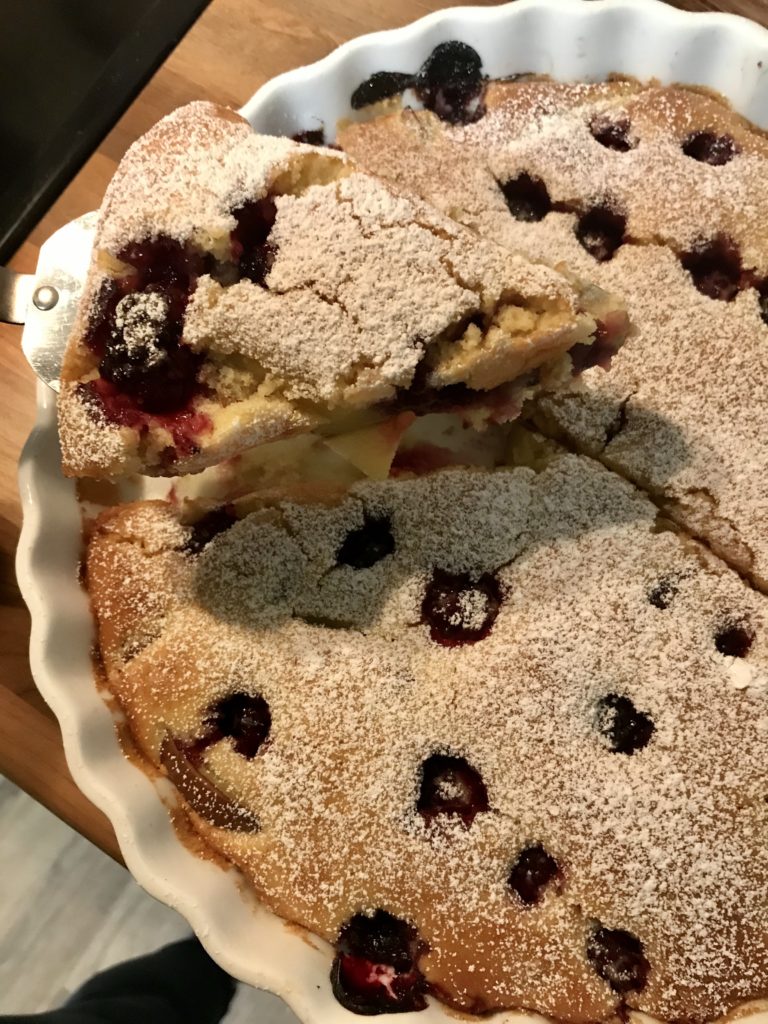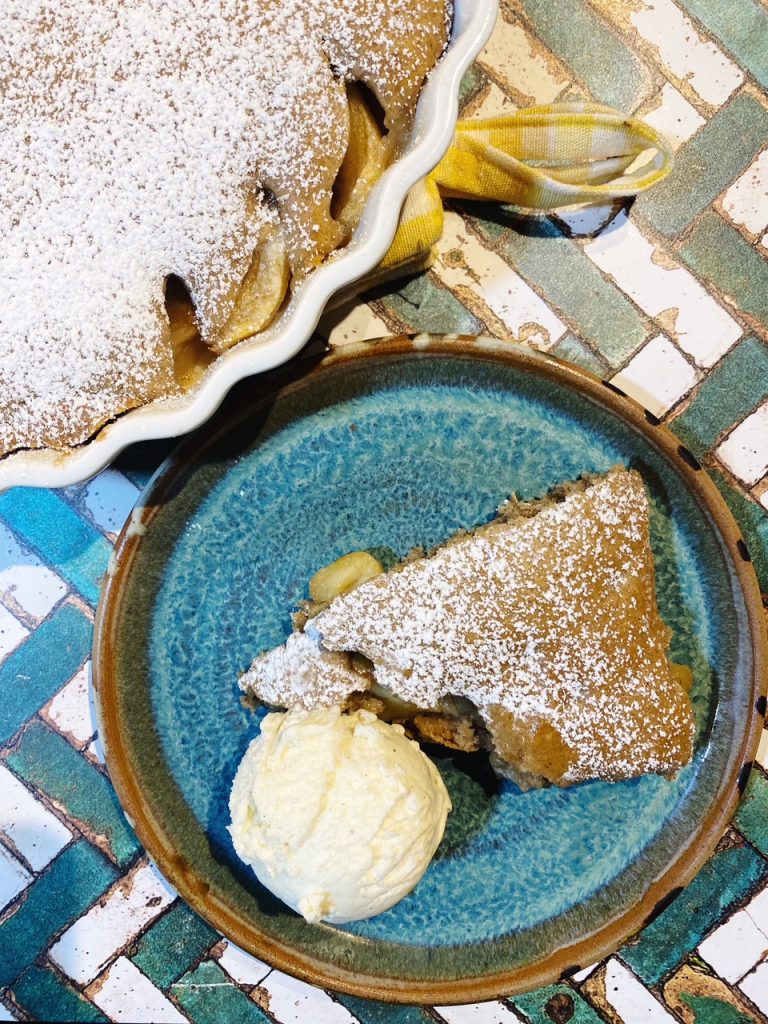
We know this recipe off by heart. It turns out perfectly every time with a sweet and tangy fruity bottom and a soft and tender sponge top. It’s the perfect pudding served warm with custard, cream or ice cream or served cold in slices with a cup of tea. This is our favourite low waste cake recipe because it’s the easiest and most delicious way to use up both the aquafaba from a tin of chickpeas (which is usually discarded) and apples, or any excess fruit really! We just often end up with too many apples in our fruit bowl, and so, before they go bad, I like to chop them up and put them in boxes or jars in the freezer, so useful for quick cakes and crumbles. We do the same thing with berries, pears and bananas (for smoothies and banana bread). Let me know if you give this simple cake a try.
Liz x
Ingredients
- 1 tsp butter (for greasing the flan dish, I use Naturli)
- 3 tsp sugar
- enough chopped apples to cover the base of your dish (or any fruit you like eg berries, chopped pears, pineapple, plums, apricots…)
- aquafaba (the liquid from a tin of chickpeas) around 150ml
- 100g sugar
- 200g flour
- 2 tsp baking powder
- 2 tsp cinnamon (or vanilla or other flavourings of your choice)
- 3 tbsp milk (I use oat milk)
- 4 tbsp good oil (I use olive)
- 1 tsp icing sugar to dust at the end, optional
Method
- Preheat your oven to 175C and find a large flan dish or cake tin. You can even use a small roasting dish if you like, there’s no law to say your cake has to be round.
- Grease your dish by rubbing butter all over the base and up the sides. Then sprinkle over 3 tsp of sugar.
- Arrange your fruit over the butter and sugar as neatly or rustically as you like.
- In a mixing bowl, whisk the aquafaba until frothy, then add the sugar and whisk until creamy.
- Add the flour, baking powder and cinnamon and stir to combine. Careful not to over-mix here! Don’t worry if the batter looks a bit lumpy.
- Now add the milk and oil and mix again, briefly, to just combine into a thick batter.
- Spread the batter over the fruit, don’t worry if it looks a little thin and doesn’t quite reach the sides, it is supposed to be quite rustic and pudding like rather than a neat cake, and besides, it will spread and rise a lot in the oven.
- Now bake until the cake is risen and golden and springs back when you lightly press on the top. This should take between 30 and 40 minutes but ovens, fruit and dish sizes vary so just keep an eye on it.
- Drench with icing sugar and serve it warm in puddingy scoops with dollops of cream, custard or ice cream. Or let it chill and serve in neat slices with a cup of tea.

